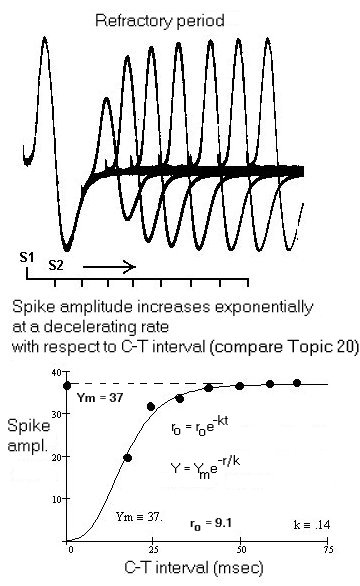
Next topic Previous topic Table of Contents
Next topic Previous topic Table of Contents
In a conditioning-testing paradigm, we ask the question, what effect does an antecedent shock have on the response to a stimulus? The effect depends upon the intensity of the shocks and the interval between them.
Adjust the stimulus intensity (0.l msec duration) to produce a maximal undistorted A wave. Deliver pairs of stimulus pulses at increasing interpulse intervals. The response to the first shock remains constant; the response to the second is small at short intervals but grows with increasing interval. If this experiment is carried out on a single axon, the second response will be essentially the same as the first, or if the interval is too short, there will be no second response.
Evidently, in a whole nerve, the nerve fibers do not all recover at the same time. There is an interval, the absolute refractory period, during which the second shock is ineffective. As the interval is increased, more fibers have recovered. The interval during which the AP has not recovered to the control level is the relative refractory period of the nerve. Estimate the absolute and the relative refractory periods.
Figure 26. Conditioning-testing: refractory period. The data are fit by a Gompertz equation (Easton 1995, 1996, 1997).

Next topic Previous topic Table of Contents